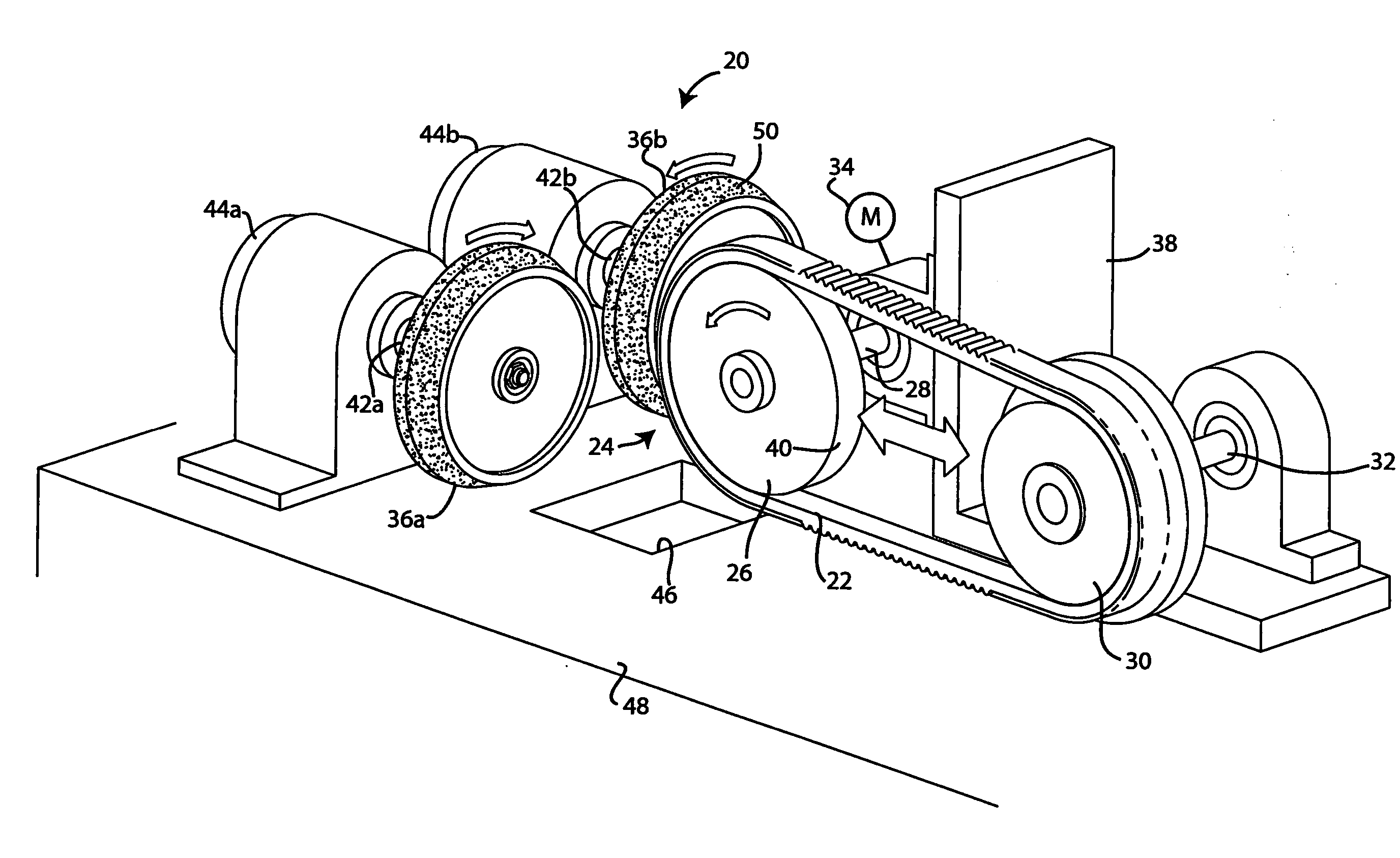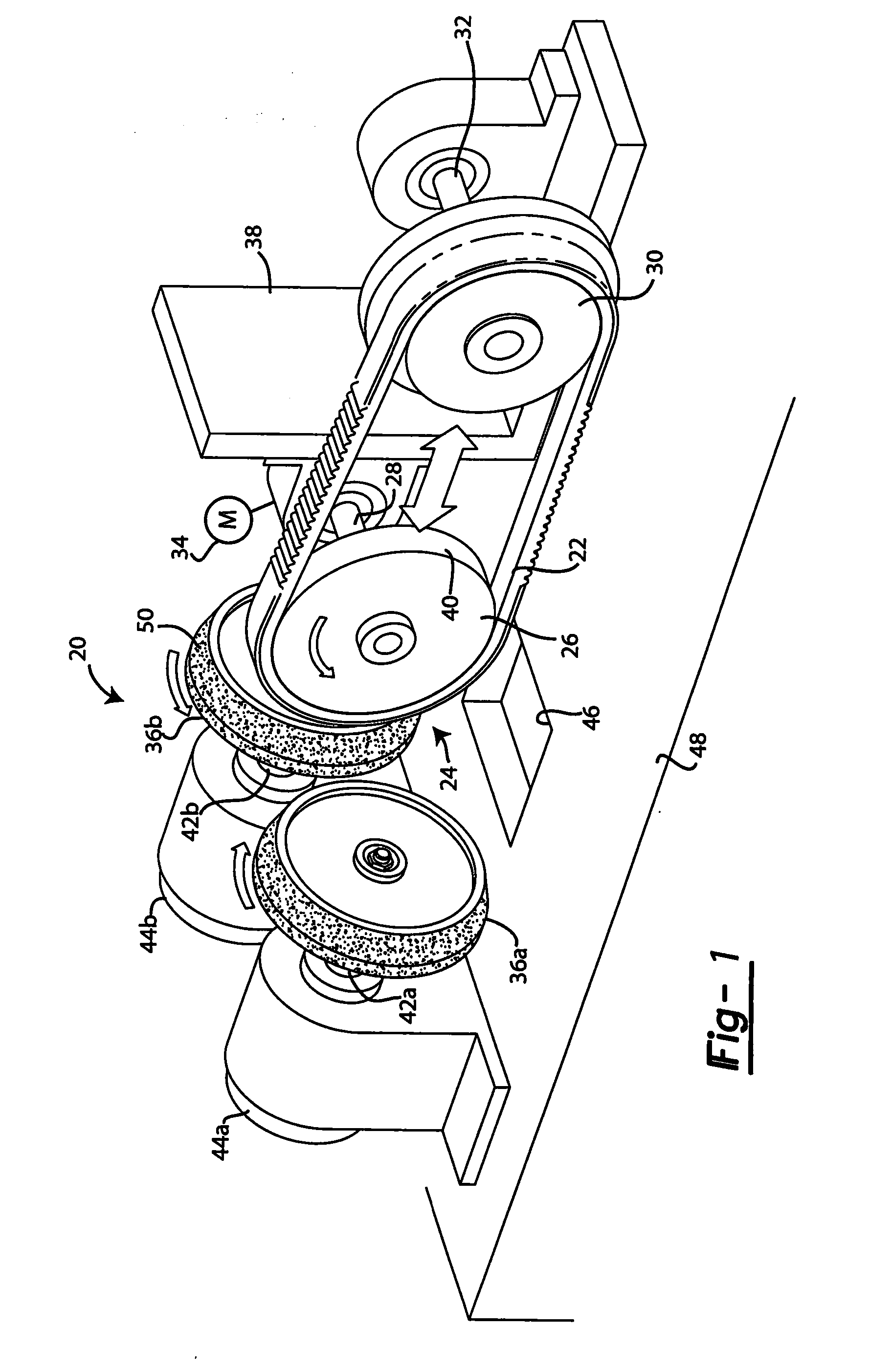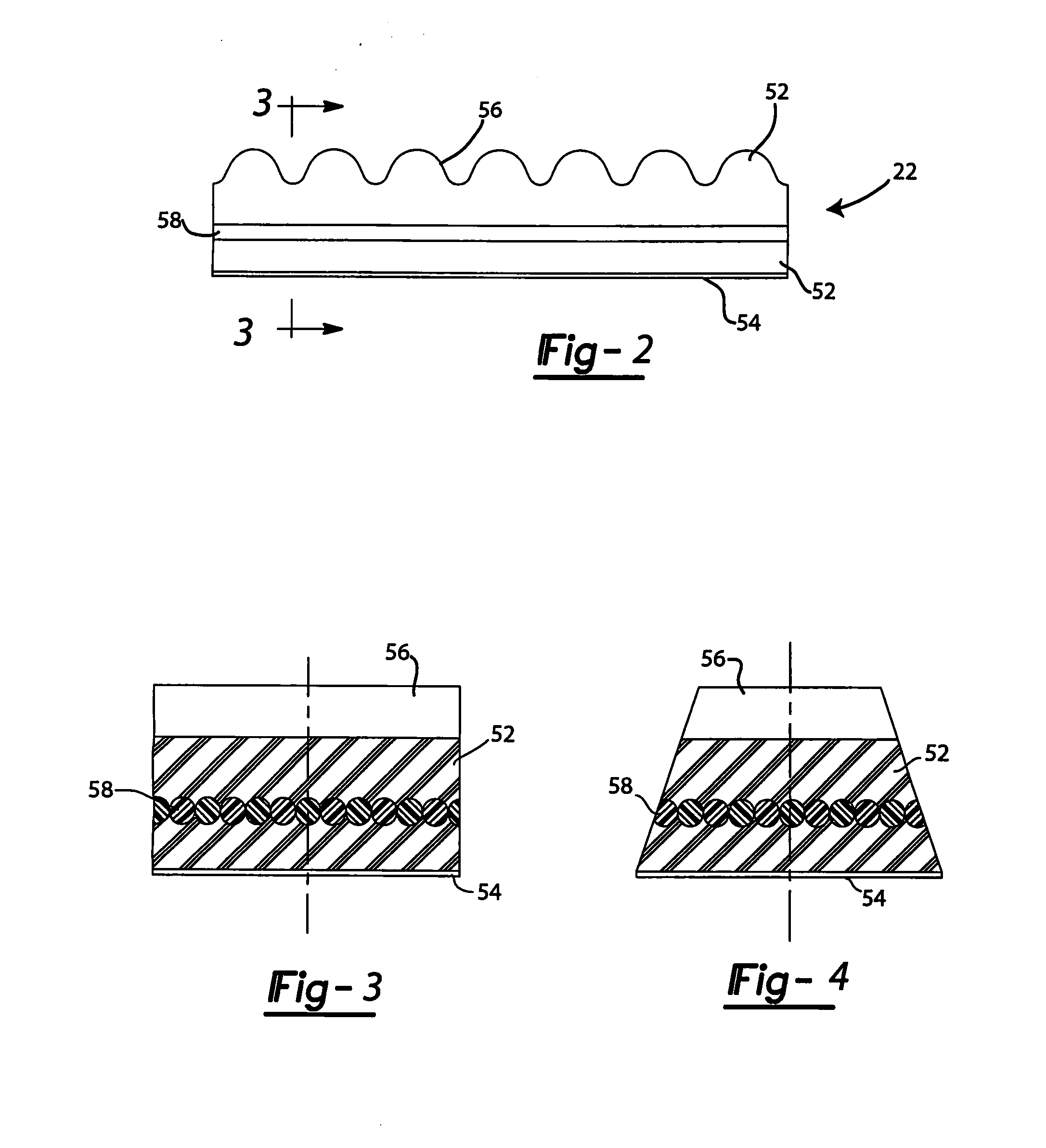Method and Apparatus for Making V-Belt
- Summary
- Abstract
- Description
- Claims
- Application Information
AI Technical Summary
Benefits of technology
Problems solved by technology
Method used
Image
Examples
first embodiment
[0028]Referring to FIG. 1, a grinding apparatus in accordance with the present disclosure is illustrated at 20. The workpiece belt to be processed is shown at 22, mounted on a moving anvil system 24. The moving anvil system includes an anvil wheel 26 journaled for rotation about shaft 28 and take-up wheel 30, journaled for rotation about shaft 32. Shaft 28 is driven for rotation by a motor shown diagrammatically in FIG. 1 at 34. The direction rotation is such that the belt 22 moves downwardly into the path of the grinding wheels 36a and 36b.
[0029]The take-up wheel 30 of the moving anvil system is preferably disposed on a repositionable, sliding carriage 38 that allows the take-up wheel to be moved both closer and farther from the anvil wheel. The sliding carriage 38 thus allows the belt 22 to be installed on the respective anvil and take-up wheels and then stretched to tighten, ensuring that the belt is held firmly on the anvil wheel during grinding. The anvil wheel 26 and the take...
third embodiment
[0038]In a third embodiment shown in FIG. 6c, the angle or contour of the belt is defined in part by the acute angle 60c of the grinding wheel surface 50 and also in part by the angle of the wheel's rotational axis 62 relative to the transverse plane 64 of the belt.
[0039]The embodiment of FIG. 6a is presently preferred from an equipment manufacturing standpoint. This is because the embodiment of FIG. 6a spins the grinding wheels about rotational axes 62 that are perpendicular to the transverse plane 64 of the belt. Thus, in this embodiment, as seen in FIG. 1, the two grinding wheels 36a and 36b are situated with their rotational axes parallel with both axes being perpendicular to the rotational axis of the anvil wheel 26. Because parallel and perpendicular geometries are used in this embodiment, alignment of the grinding wheels and anvil can be effected using straightforward 90° alignment fixtures.
[0040]In each of the above embodiments the anvil wheel has a round or circular cross s...
PUM
| Property | Measurement | Unit |
|---|---|---|
| Angle | aaaaa | aaaaa |
| Radius | aaaaa | aaaaa |
Abstract
Description
Claims
Application Information
 Login to View More
Login to View More - R&D
- Intellectual Property
- Life Sciences
- Materials
- Tech Scout
- Unparalleled Data Quality
- Higher Quality Content
- 60% Fewer Hallucinations
Browse by: Latest US Patents, China's latest patents, Technical Efficacy Thesaurus, Application Domain, Technology Topic, Popular Technical Reports.
© 2025 PatSnap. All rights reserved.Legal|Privacy policy|Modern Slavery Act Transparency Statement|Sitemap|About US| Contact US: help@patsnap.com



